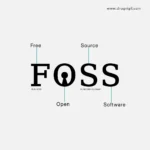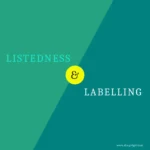This blog covers:
- How automation can improve ICSR processing
- Best practices for implementing automation
- Key benefits of automation in pharmacovigilance
Table of Contents
Introduction
Smart innovations and advanced technologies are always welcomed across every industry, and pharmacovigilance is no exception. In the field of Individual Case Safety Reports (ICSRs), the sheer volume of data generated daily makes efficient handling not just important, but absolutely essential.
However, building automation for pharmacovigilance is not just about creating a smart tool; it is about creating a robust, compliant, and intelligent system.
Automation of ICSR
Automation and AI have tremendous potential to revolutionize ICSR management—bringing speed, accuracy, and scalability to a process that has long depended on manual work.
Before considering and implementing automation, a few critical points should be kept in mind:
- ICSRs definitely need automation due to increasing workload and complexity.
- ICSR processing faces an overwhelming daily volume that is difficult to manage manually.
- ICSRs have a direct impact on public health, making efficiency and accuracy non-negotiable.
- Expedited processing is crucial, as delays could affect patient safety.
- Automation must operate under strict regulatory compliance to meet global pharmacovigilance requirements.
Automation in Focus: Is It the Right Choice?
Most organizations explore technology-driven solutions in pharmacovigilance to ensure they can scale effectively over time. AI continues to offer multiple benefits in this domain, including:
- Faster time to market for safety reporting
- Enhanced compliance and improved data quality
- Positive return on investment (ROI) due to efficiency gains
- Improved monitoring of the benefit-risk profile of products
- Future readiness by scaling existing operations seamlessly
It is clear that AI, automation, and robotics are shaping the future of all industries—and pharmacovigilance is no exception. The integration of these technologies will be key in ensuring that ICSR processes are faster, more accurate, and fully compliant with evolving regulatory landscapes.
“In pharmacovigilance, automation isn’t about replacing people—it’s about empowering them to focus on what truly matters: safeguarding patient safety with speed, precision, and insight.”
Benefits of AI in Automating Pharmacovigilance
The integration of AI and automation can significantly enhance pharmacovigilance (PV) workflows, delivering improvements in efficiency, compliance, and scalability.
Key benefits include:
- Enhanced data quality and accuracy through standardized inputs for automated case processing
- Improved productivity by reducing time and effort spent on repetitive, low-value data entry and manual process steps
- Shortened cycle times, enabling faster case intake and processing without compromising accuracy
- Expedited path to market with no compromise on patient safety
- Scalability and future readiness by efficiently handling growing case volumes and diverse incoming data formats
- Better compliance through consistent and accurate adverse event (AE) reporting
- Positive return on investment (ROI) with measurable cost savings from technology that augments existing processes and tools
Additional automation-driven capabilities:
- MedDRA coding automation for precise and efficient terminology mapping
- Accurate case classification to ensure proper processing and prioritization
- Automated workflow routing for faster case assignment and resolution
- Label automation to streamline safety information updates
- Automated reference documentation to support regulatory submissions
- Advanced data analytics for deeper safety insights
- Automated triaging and submission monitoring for timely regulatory compliance
- AE evaluation and analysis to improve safety decision-making
- Automated literature screening and case detection to drastically reduce manual workload and improve surveillance
Tools for Automation
If you are a beginner exploring automation for data analysis and workflow automation, here are a few recommended tools to start with:
- TagUI – Open-source RPA tool for automating repetitive tasks
- n8n – Workflow automation platform with easy integrations and triggers
- R – Powerful language for statistical computing and data analysis
- Ollama – Useful for AI-driven automation and data handling
In pharmacovigilance, automation is already being implemented—particularly for handling batch reports and repetitive case processing tasks. Major players in the industry have refined and integrated many tools into their PV operations, ensuring compliance, efficiency, and scalability.
Conventional Methods vs Automation
In pharmacovigilance, traditional (conventional) methods have been the backbone of ICSR processing for years. However, with growing data volumes and compliance demands, automation offers clear advantages in streamlining workflows.
Below is a comparison showing how automation can enhance key areas of PV operations:
| Conventional | Automation |
|---|---|
| Manual analysis | Automated analysis using advanced algorithms |
| Risk of missed submissions | Automatic case detection and triaging |
| Extremely time-consuming processes | Reduced workload through automated task handling |
| High resource requirements | Cost-effective operations with significant savings |
| Manual signal detection | Automated identification of signals and adverse events |
| Potential under-reporting | Improved detection and prevention of under-reporting |
| Manual case intake and recording | Automated intake and recording of newly reported AEs |
| Manual data validation | Automated data capture and validation |
| Manual literature screening | Automated literature search and case detection |
| Manual follow-ups and tracking | Automated reminders and workflow routing |
| MedDRA coding performed by processors | Automated MedDRA coding with AI-assisted review |
End Goal of PV Automation
The ultimate aim of implementing automation and machine learning in pharmacovigilance is to effectively handle large volumes of data while providing robust analytical capabilities. The PV domain holds significant potential for improving automation, and this must be approached as an incremental and continuous process.
Have You Implemented Automation in Your ICSR Workflow Yet?
In today’s fast-paced pharmacovigilance landscape, manual processing of Individual Case Safety Reports (ICSRs) is no longer sustainable.
Whether you’re just exploring options or actively planning your implementation, now is the time to think.
Key Takeaways
Automation should ease the burden — It must go beyond being a buzzword and truly simplify processes.
Test automation is essential — It plays a critical role in identifying gaps and inefficiencies early.
ICSR processing demands automation — Given the heavy workload, automating Individual Case Safety Report (ICSR) workflows is no longer optional.
Plenty of tools are available — Both proprietary and open-source tools exist, with open-source options often being the most flexible and cost-effective.
Conclusion
This blog emphasizes the growing need for automation and machine learning in pharmacovigilance, highlighting key areas where focused improvements can bring substantial value.
Consistent development, guided by clear objectives, will enhance efficiency and ensure that systems evolve in the interest of public safety. As the volume of reports increases daily, the necessity of automation becomes ever more critical.
We welcome your feedback, suggestions, and constructive criticism. If you found this content valuable and are enthusiastic about contributing to innovations in drug safety, we encourage you to share your ideas or get involved.
Thank you for reading!







Leave a Reply